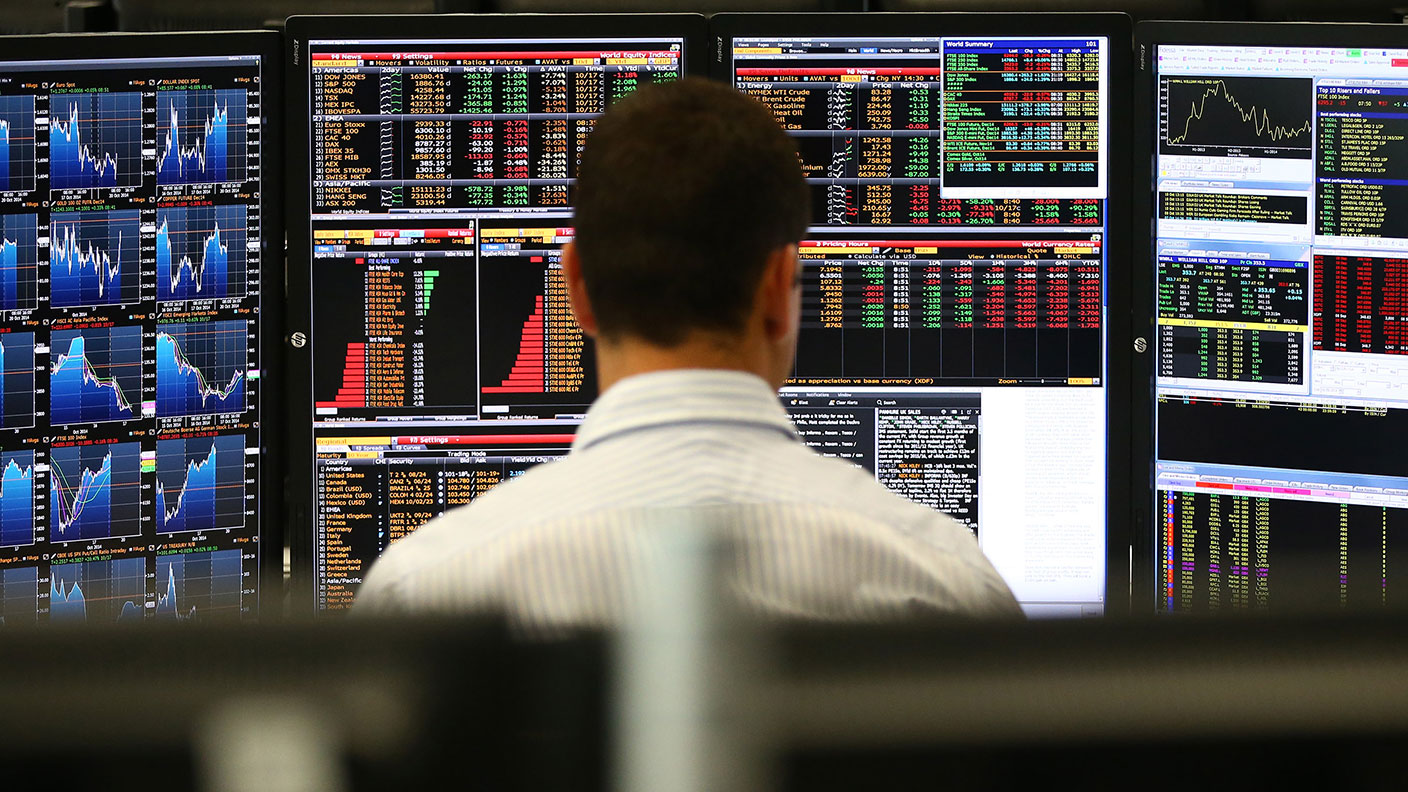How can you tell if the market is overvalued?
There are plenty of ways to value markets, says Max King, but nothing is infallible. Every ratio and calculation needs to be taken with a large pinch of salt – and what works this time won’t necessarily work in the future. Here, he looks at some of the more popular metrics.

When are stockmarkets cheap and when are they expensive? In theory, the past offers an ideal yardstick to judge the present but, in practice, it is much harder than the pundits make out.
The simplest measures compare current share prices to earnings (the p/e ratio), to dividends (dividend yield) and to net assets (price to book) relative to the past.
The most visually credible charts are those that go back furthest, but the long-term data is highly unreliable. UK companies, for example, were only required to publish profit & loss accounts in 1929 and banks disclosed profits “after transfers to or from inner reserves” until 1973.
MoneyWeek
Subscribe to MoneyWeek today and get your first six magazine issues absolutely FREE

Sign up to Money Morning
Don't miss the latest investment and personal finances news, market analysis, plus money-saving tips with our free twice-daily newsletter
Don't miss the latest investment and personal finances news, market analysis, plus money-saving tips with our free twice-daily newsletter
Accounting rules change over time and have become more stringent. Extraordinary items, such as losses on disposals, closures or major restructuring, can no longer be written off below the line and, inevitably, extraordinary gains were much less frequent.
Buildings used not to be depreciated and goodwill on acquisition (the difference between the price paid and the net assets acquired) was written off below the line.
There has been a steady shift away from physical assets to intangible ones, such as intellectual property rights, know-how and brands. Expenditure on them is written off rather than capitalised, reducing both profits and net assets.
As a result, price/earnings and price/book ratios should have drifted upwards over time, accounting for some of the upward trend.
There are plenty of ways to value markets but nothing is perfect
Dividend yields should be a better guide to long-term profit trends – but the legalisation of share buy-backs in the 1980s in the US and 1990s in the UK have given companies an alternative, much used, way of returning cash to investors.
The comparatively high yield of the UK market has not prevented relentless underperformance for nearly 20 years and, until the pandemic, many companies were paying unsustainable dividends which have since been cut. The high yield was an illusion which probably held the market back.
Comparison of price/earnings ratios, price/book and dividend yields take no account of government bond yields, the risk-free (in nominal terms) competitive investment. The lower bond yields are, the lower the required dividend yield and the higher the justifiable price/earnings ratio. Equities ought to look expensive when bond yields are low, and cheap when they are high.
Bond yields have, in the past, reasonably reflected inflation trends but that is far from obvious at present. Inflation increases the replacement cost of assets, thereby reducing the earnings available for new investment and distribution to investors. In the 1970s, profits in real terms were far below nominal profits, making “cheap” equities much less so. Nowadays, the lower capital intensity of businesses reduces this factor.
Finally, earnings are volatile, rising and falling with the economic cycle. Markets have a tendency to look cheap at the top of the cycle when revenues and margins are at a peak, and expensive at the bottom of a cycle when they have fallen but investors are anticipating a rebound.
Hence the market turned upwards in mid-2020 before the earnings recovery, as it did in early 2009 and early 2003, but turned down in early 2000, in 2007 and early 2022 when earnings were rising strongly.
To compensate for this, Robert Schiller devised the “cyclically adjusted price earnings ratio” (Cape or “Schiller p/e”). He sought to take out cyclicality of earnings by using the ten year moving average p/e ratio – but this has proved a poor guide to market valuations across time, countries and regions.
As before, it fails to take account of the changes in accounting rules and disregards government bond yields. A period of ten years may include two recessions, making the market look expensive when earnings are about to take off, or no recession at all, in which case the market will look cheap but a downturn is around the corner.
Cape does not look forward and adjusts only slowly over time (due to the ten-year moving average) so has not proved to be a helpful indicator of value, having been bearish on the US for a good ten years.
Warren Buffett is credited with the “Buffett ratio” which measures the total market value of the US market relative to US GDP. Again, this ignores the yardstick of government bond yields, but it also ignores two other important factors.
Firstly, US tax rates have reduced over time, with the effective rate falling from 50% in 1950 to around 20% now. Secondly, it ignores the rest of the world, which accounts for a steadily increasing share of the profitability of US companies.
In short, it’s very hard to time markets
There is no simple ratio or calculation that reliably tells investors when the market is cheap or expensive on a long term view. All measures need to be taken with a large pinch, if not a bucketful, of salt; what works varies over time.
Lower bond yields may indicate an economic slowdown or a recession, which is likely to damage corporate earnings, but they are still useful. Investors tend to look through cyclical weakness of earnings but higher yields flash a warning sign. It is not a surprise that markets have rallied as the yield on the ten-year US Treasury bond has recently backed off from 3.4% towards 3%.
Indicators that do seem to work are those measuring investor sentiment, notably the AAII advisory survey in the US and the Merrill Lynch institutional survey globally. These are contrary indicators, so the time to buy is when sentiment is deeply negative, as it is now.
They do not always work instantly – Ed Yardeni points to the current “buy” reading but warns against “fighting the Federal Reserve when the Federal Reserve is fighting inflation” – but patience will be rewarded.
Professional investors and advisers know that their collective assessment is wrong and so they ought to adjust their responses accordingly, but they don’t.
For those that are wary of following surveys, there is another useful, often forgotten, indicator; buy the market when it is down 10% year-on-year and sell when it is up 30%. The idea is that investors are likely to be over-confident when markets have done well and too gloomy when they have performed poorly.
The S&P 500 didn’t quite give a sell signal at the end of 2021 but since returns were in double digits in 2019 and 2020, up 92% in three years, jumping the gun would have been prudent. Buy signals were given at the end of 2018, a little early in March 2020 and again in mid-June 2022.
Just remember: even if it works this time, it won’t always.
Get the latest financial news, insights and expert analysis from our award-winning MoneyWeek team, to help you understand what really matters when it comes to your finances.

Max has an Economics degree from the University of Cambridge and is a chartered accountant. He worked at Investec Asset Management for 12 years, managing multi-asset funds investing in internally and externally managed funds, including investment trusts. This included a fund of investment trusts which grew to £120m+. Max has managed ten investment trusts (winning many awards) and sat on the boards of three trusts – two directorships are still active.
After 39 years in financial services, including 30 as a professional fund manager, Max took semi-retirement in 2017. Max has been a MoneyWeek columnist since 2016 writing about investment funds and more generally on markets online, plus occasional opinion pieces. He also writes for the Investment Trust Handbook each year and has contributed to The Daily Telegraph and other publications. See here for details of current investments held by Max.
-
 Why you fear money – and how to fix it: MoneyWeek Talks
Why you fear money – and how to fix it: MoneyWeek TalksPodcast MoneyWeek's digital editor, Kalpana Fitzpatrick, speaks to financial psychotherapist Vicky Reynal about how to change your money mindset for the better.
-
 How cancelling unused direct debits could boost your pension by £37,000
How cancelling unused direct debits could boost your pension by £37,000A new year refresh of your spending could save you money and help boost your pension pot.
-
 The outlook for stocks is improving
The outlook for stocks is improvingThis is the best of times for investors, says Max King. Global risks are receding, but few have noticed.
-
 The building blocks for an income strategy: resilience, growth and diversification
The building blocks for an income strategy: resilience, growth and diversificationAdvertisement Feature Iain Pyle, Investment Manager, Shires Income plc
-
 Investment platforms: how to avoid sub 2% interest rates on cash holdings and secure a better deal
Investment platforms: how to avoid sub 2% interest rates on cash holdings and secure a better dealDo you know how much interest the cash balance in your investment portfolio, ISA or Sipp earns? We lift the lid on the best and worst interest-payers – and explain what you can do about it
-
 Rethinking ESG investing
Rethinking ESG investingAnalysis Sustainable ESG funds are coming under attack for a lack of focus. Investors need to be selective
-
 Can a woman deliver you better returns?
Can a woman deliver you better returns?Tips Women often make better stock pickers than men, delivering stronger returns for investors - but with fewer females managing funds, how can you make sure you take advantage of the feminist touch when picking funds? Kalpana Fitzpatrick on how to filter funds run by women and why it matters.
-
 Flat fees vs percentage fees - are you paying too much for your investments?
Flat fees vs percentage fees - are you paying too much for your investments?Analysis We investigate whether it’s better to choose an investment platform with flat fees, or whether percentage charges could work out cheaper.
-
 What is a dividend yield?
What is a dividend yield?Videos Learn what a dividend yield is and what it can tell investors about a company's plans to return profits to its investors.
-
 Fund platform launches low cost £4.99 a month service for small investors - we see how it compares
Fund platform launches low cost £4.99 a month service for small investors - we see how it comparesAdvice Aimed at investors with small investment pots of £30k or less, fund platform interactive investors has launched a low costs service - but is it any good and how does it compare to rivals?
